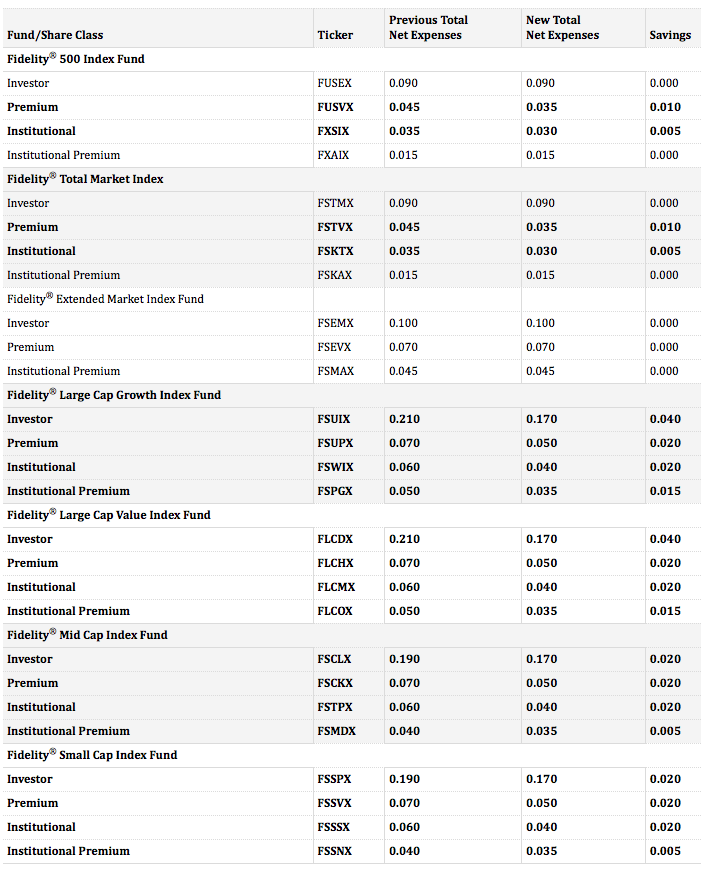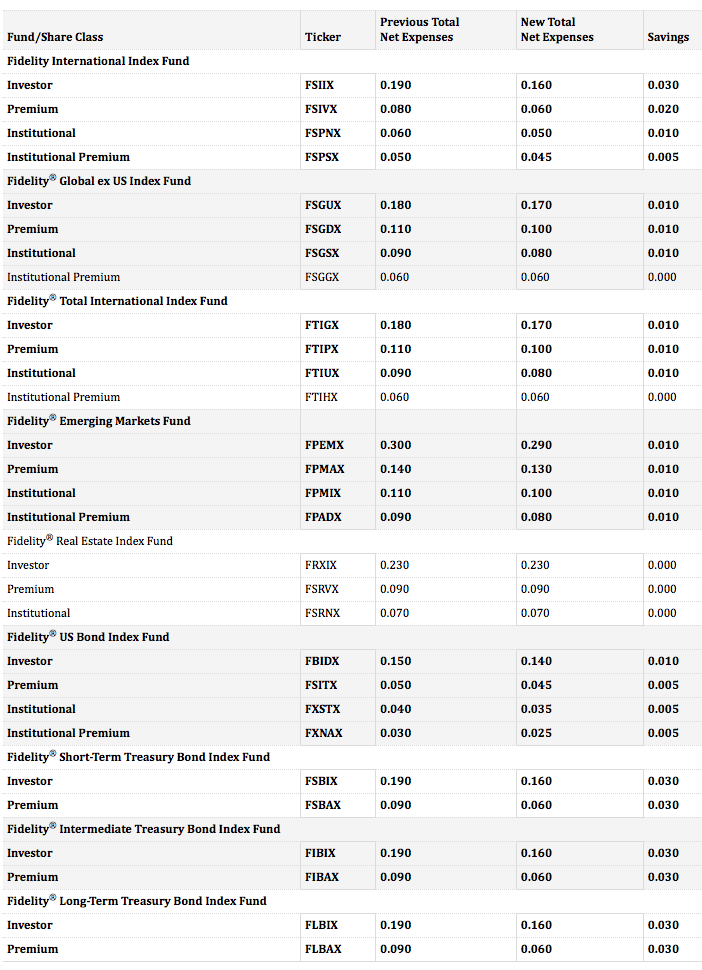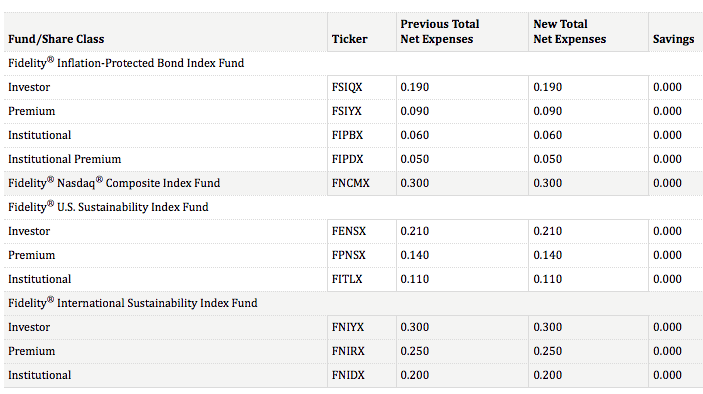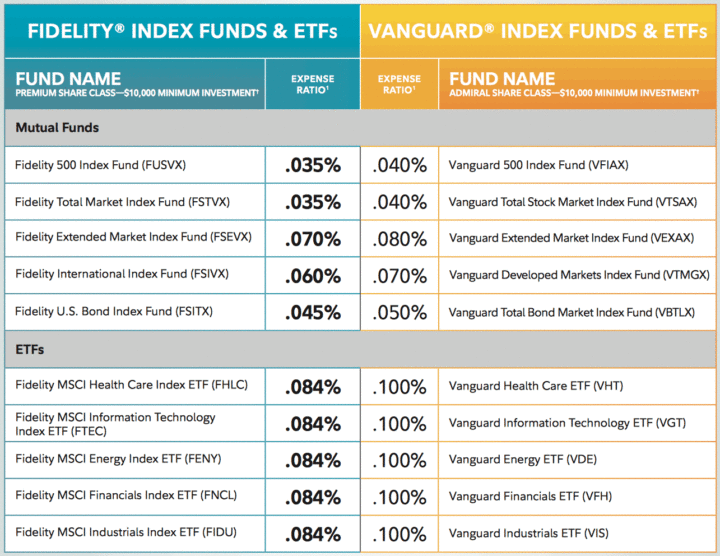
Updated. Fidelity announced another round of expense ratio cuts effective August 1, 2017. They last announced a big round of expense ratio drops in July 2016. This move allows them to make the following claim:
Fidelity beats Vanguard on expenses on 17 of 17 comparable stock and bond index funds and 11 of 11 comparable sector ETFs. Comparisons based on fund expense ratios only.
Mutual Fund Share Classes. Fidelity separates mutual funds into Investor Class ($2,500 minimum) and Premium Class ($10,000). Individual ivestors in employer retirement plans may have access to these funds, including institutional share classes, without the minimums. This is in close alignment with Vanguard Investor and Admiral share classes.
Highlights. Here are some broad US and Domestic index funds that I track.
- Fidelity 500 Index Fund. Investor 0.09% Premium 0.035%
- Fidelity Total Market Index Fund. Investor 0.09% Premium 0.035%
- Fidelity (Developed) International Index Fund. Investor 0.16% Premium 0.06%
- Fidelity Global ex U.S. Index Fund Investor 0.17% Premium 0.10%
- Fidelity Total International Index Fund Investor 0.17% Premium 0.10%
- Fidelity Emerging Markets Index Fund Investor 0.29% Premium 0.13%
- Fidelity U.S. Bond Index Fund Investor 0.14% Premium 0.045%
- Fidelity Inflation-Protected Bond Index Fund Investor 0.19% Premium 0.09%
Here is the full list with changes (official page):




 The Best Credit Card Bonus Offers – 2025
The Best Credit Card Bonus Offers – 2025 Big List of Free Stocks from Brokerage Apps
Big List of Free Stocks from Brokerage Apps Best Interest Rates on Cash - 2025
Best Interest Rates on Cash - 2025 Free Credit Scores x 3 + Free Credit Monitoring
Free Credit Scores x 3 + Free Credit Monitoring Best No Fee 0% APR Balance Transfer Offers
Best No Fee 0% APR Balance Transfer Offers Little-Known Cellular Data Plans That Can Save Big Money
Little-Known Cellular Data Plans That Can Save Big Money How To Haggle Your Cable or Direct TV Bill
How To Haggle Your Cable or Direct TV Bill Big List of Free Consumer Data Reports (Credit, Rent, Work)
Big List of Free Consumer Data Reports (Credit, Rent, Work)
A few bps in expense savings mean nothing. Don’t chase expenses, chase performance.
Chasing performance? Really? Thanks for reminding of a post draft that I never finished.
I am a big fan of low cost passive index investing for the long run. Having said that one of my holdings in a non-index active-managed funds, RPMGX, has been beating its competition for a long period.
One way Fidelity was able to cut expenses was through staffing cuts. This strategy is likely to backfire in the long term.